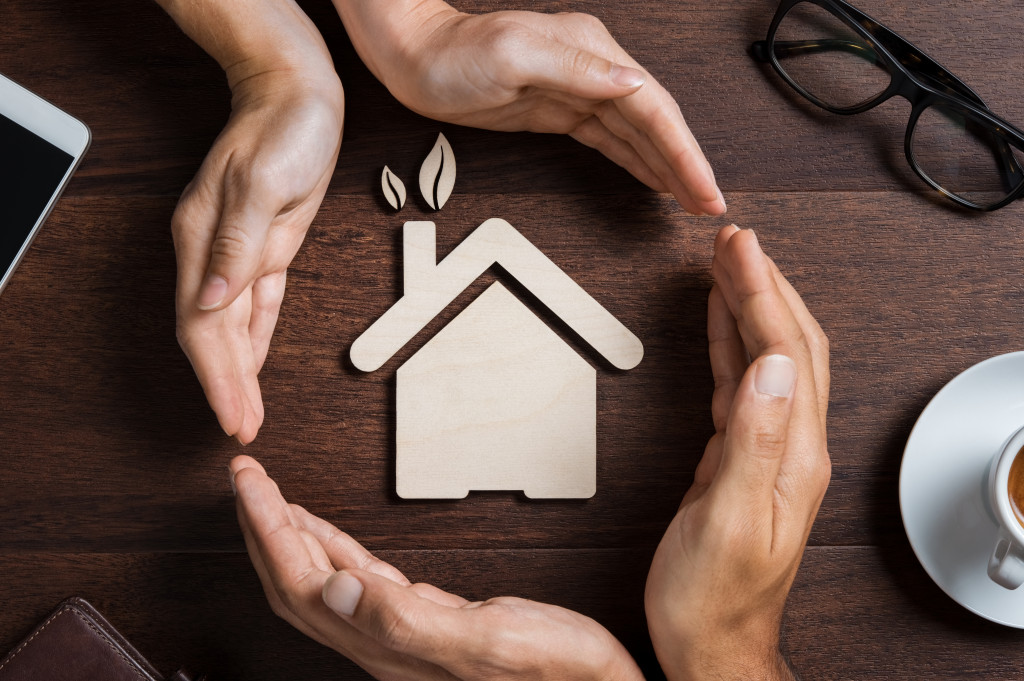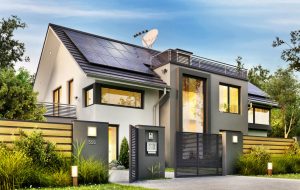- Building a sustainable home should be energy efficient, using renewable resources like solar energy instead of fossil fuels.
- Materials used should be natural and environmentally friendly, with low levels of toxicity.
- Benefits include money savings in the long run and reducing your carbon footprint.
- Homeowners can use green building techniques such as selecting recycled materials and installing low-flow fixtures.
- Sustainable landscaping should include native plants, green spaces for rainwater absorption, and habitats for native wildlife.
Building a sustainable home is essential for those who want to make their properties more environmentally friendly and efficient. Several vital considerations must be considered when building a sustainable home, from energy efficiency to renewable energy sources.
What Makes a Home Sustainable?

A sustainable home should be energy efficient—using renewable resources like solar energy to power your home instead of relying on fossil fuels. It should also be designed with natural materials that are environmentally friendly and have low levels of toxicity.
This includes materials like bamboo flooring or cork wall panels, as well as non-toxic paints and furniture made from recycled materials. Additionally, a sustainable home should have fixtures like low-flow toilets, water-efficient appliances, and natural ventilation systems that help to regulate indoor temperatures without using electricity or gas for heating or cooling.
The Advantages of a Sustainable Home
The most obvious benefit of a sustainable home is that it saves you money in the long run by reducing your energy bills and other utility costs. Furthermore, you can also take advantage of government tax credits or subsidies when you switch to a renewable energy source like solar power. Finally, living sustainably can reduce your carbon footprint and help preserve our planet’s limited resources for future generations.
Creating a Sustainable Home
Homeowners and contractors use various green building techniques to build sustainable homes. And while the exact techniques vary, the goal is to create a home that uses fewer resources, saves energy and money, and is better for the environment. Here are a few examples:
Building Materials
It’s essential to select building materials carefully when constructing a sustainable home. Consider using recycled materials, such as reclaimed wood or recycled insulation, whenever possible. It’s also worth looking into vinyl flooring instead of wood, as it can last up to 20 years without requiring professional maintenance.
For your flooring needs, consult professional flooring installers and avoid DIY projects. This will ensure that the flooring is installed properly and efficiently while also making sure that it meets safety standards.
Energy Efficiency
One of the most important aspects of building a sustainable home is ensuring the structure is as energy efficient as possible. This means using materials and technologies that will prevent heat loss or gain, like insulated walls and windows, and ensuring that the HVAC system is properly sized for the house’s needs.
It’s also worth considering solar panels or other renewable energy sources to reduce reliance on traditional utilities and lower your carbon footprint. This is a more expensive upfront investment but will pay off in the long run.
Water Conservation

Another factor to keep in mind when building a sustainable home is water conservation. This can be achieved by installing low-flow fixtures such as showerheads, toilets, and faucets, which reduce water usage without compromising performance.
You can also consider collecting rainwater for some uses, such as irrigation or other outdoor activities. Additionally, you should use native plants where possible to reduce water consumption. For example, drought-resistant plants like cacti or succulents require less water than traditional grass lawns.
Sustainable Landscaping
Sustainable landscaping is another essential factor to consider when building a sustainable home. This includes using native plants adapted to the local climate that can thrive with minimal watering or maintenance. It also means creating green spaces that help absorb rainwater and reduce runoff, which can help protect against flooding and erosion.
Additionally, green landscaping can provide essential habitats for native wildlife and help create a more beautiful outdoor space. By taking these steps, you can ensure that your home is more sustainable and help create a more resilient and biodiverse ecosystem in your local environment.
The Bottom Line
Building a sustainable home requires careful planning and consideration of all aspects of the project from start to finish to ensure maximum efficiency and minimal environmental impact.
From selecting materials wisely to incorporating renewable energy sources, you can make your property more environmentally friendly while enjoying modern luxuries like air conditioning, heating systems, running water, and more! With these critical considerations in mind, you’ll be well on your way to creating an eco-friendly oasis you can enjoy for years to come!






